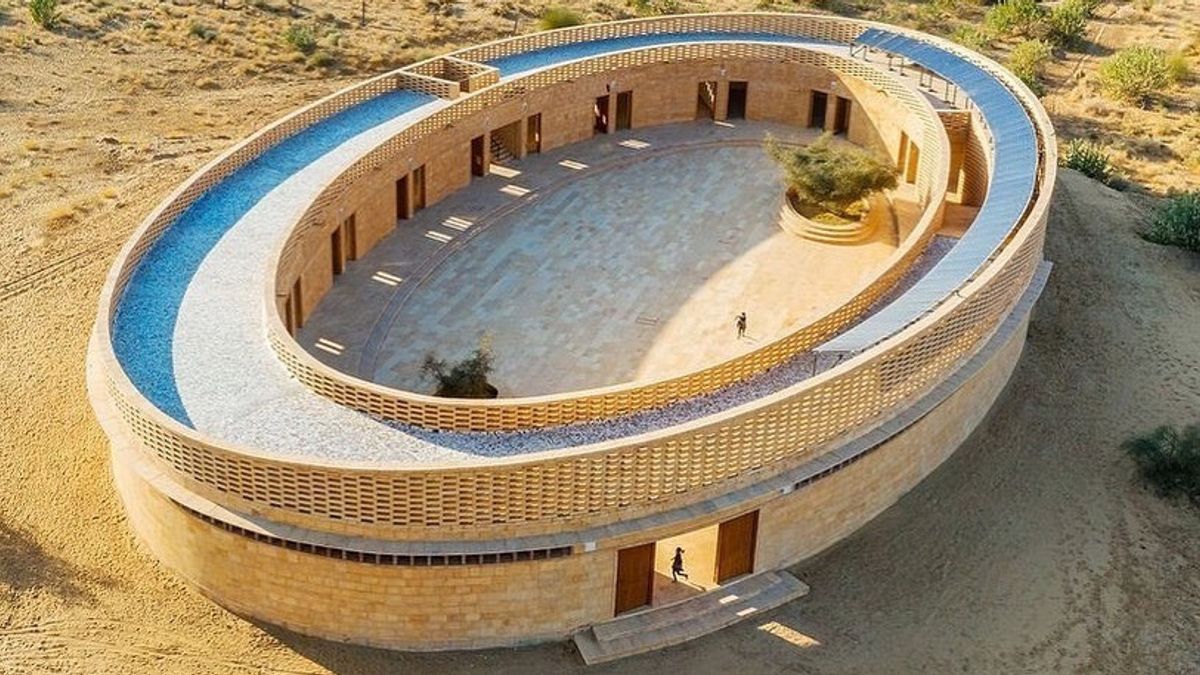JAKARTA - Students in India bravely brave 45-degree temperatures to attend classes, even though their school is in the heart of the Thar desert.
However, the Rajkumari Ratnavatim Girls' School, as the school is called, does not require air conditioning as its unique and sustainable design keeps it cool. This is interesting, because in Jaisalmer, northwest India, only a third of women and girls can read and write.
Staff at the Rajkumari school, which houses more than 400 students between the ages of four and sixteen, are hoping to raise these worrying statistics.
Thanks to the school's unique oval building, they can study in peace despite the scorching temperatures and ordinary sandstorms. The building was designed by New York-based architect Diana Kellogg.
"As a female architect who designs for women, I see a cross-cultural feminine symbol and especially a symbol of power," Kellogg told architectural magazine Dezeen, citing Euronews June 12.
"I ended up landing on an oval that represented femininity and resonated with me as an infinity formulation. I knew I wanted to create buildings that simultaneously blended in and grew out of the natural landscape, like Jaisalmer sandstone," she explains.
The 836 square meter structure is sustainable, as well as symbolic. A large outer wall wraps around the school. While the interior walls enclose the school classroom. In the center, there is a large oval courtyard.

"I wanted the school's design to provide shade for the girls in the yard," says Kellogg.
"An ellipse seems like the most natural way to do this," he says.
The building is powered by rooftop solar panels, which also serve as a shading canopy. It is cooled by a geothermal energy system, with lime stucco on the inner walls keeping it insulated.
Jalis (perforated lattice stonework) protects students from the sandstorms that hit the area, while allowing natural sunlight in. Meanwhile, the water harvesting system collects and recycles rainwater throughout the school.
The designers wanted the whole community to benefit from the school. Built by local builders using local sandstone, this is the first in a planned complex of three buildings.
Named the Gyann center, it will host The Medha, an art performance and exhibition space with a library and museum. The three buildings will also contain the Women's Cooperative, a study room where local craftsmen will teach women's weaving and embroidery techniques.
The project was launched by CITTA, an American nonprofit organization dedicated to supporting development in "some of the most economically challenged, geographically remote or marginalized communities in the world."
The English, Chinese, Japanese, Arabic, and French versions are automatically generated by the AI. So there may still be inaccuracies in translating, please always see Indonesian as our main language. (system supported by DigitalSiber.id)













